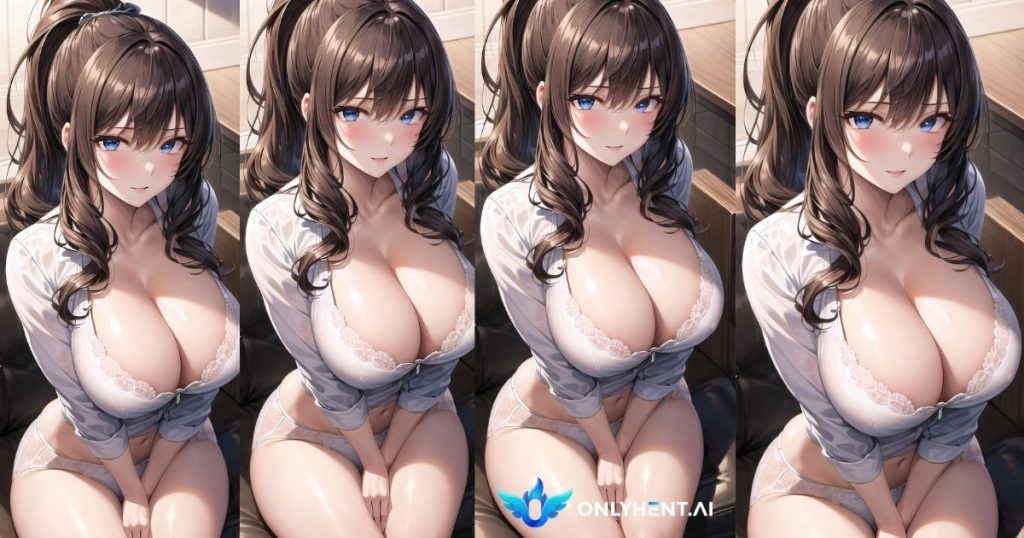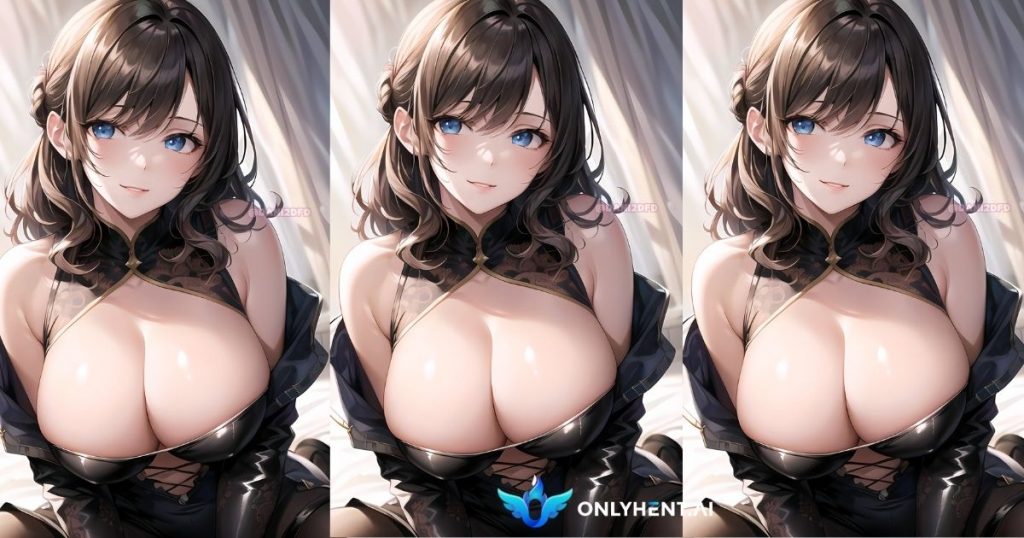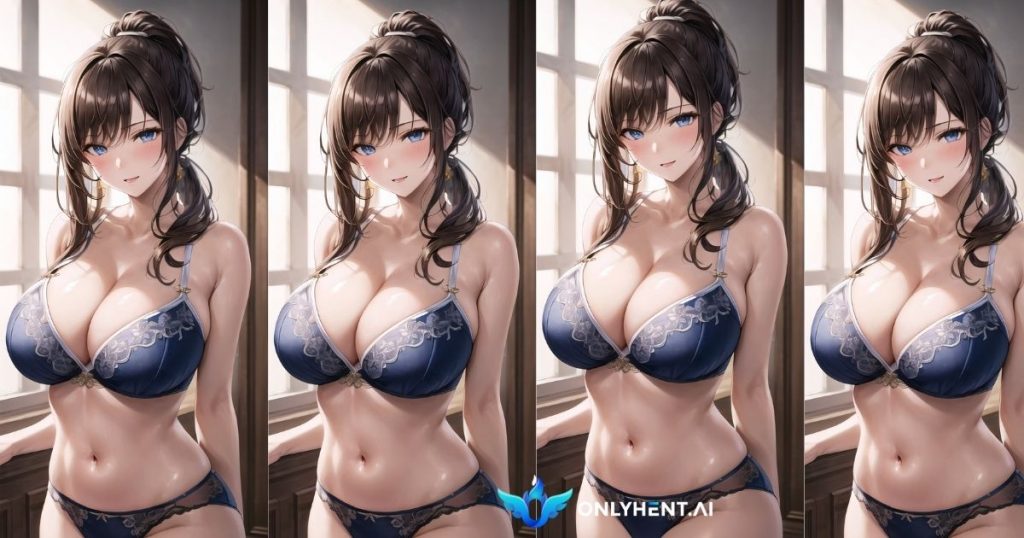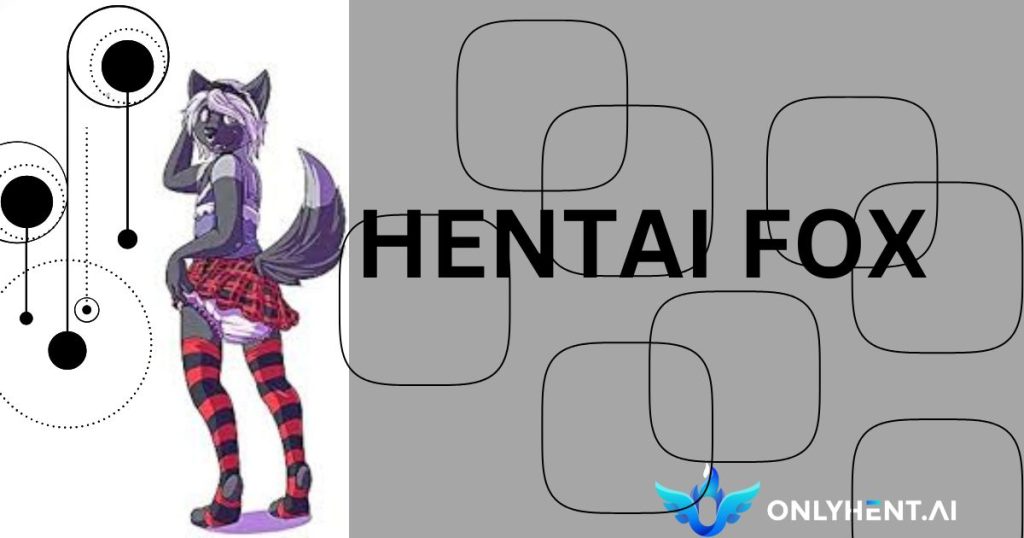Definition of Hentai Series
Hentai series, a term often surrounded by intrigue and misconceptions, refers to a specific genre of Japanese animation and comics characterized by sexually explicit content and themes. The word ‘hentai’ in Japanese translates to ‘perverse’ or ‘abnormal’ and is used to describe this genre’s explicit nature. Unlike traditional anime and manga, hentai series are designed explicitly for an adult audience, featuring a range of erotic storytelling and artwork.
Brief Overview of its Origins and Cultural Significance
The roots of hentai series can be traced back to historical Japanese art forms, such as ‘Shunga’, a genre of erotic art prominent during the Edo period. These early forms influenced the later development of adult themes in Japanese media. Post World War II, Japan saw a cultural and artistic revolution, leading to the emergence of manga and anime as popular entertainment mediums. Within these, hentai began to emerge as a distinct genre by the late 20th century.
The evolution of hentai series is a reflection of changing cultural attitudes towards sexuality and artistic expression in Japan. Initially confined to Japanese audiences, the genre gained international exposure with the advent of the internet. Iconic series like “Urotsukidoji” and “La Blue Girl” played crucial roles in popularizing hentai globally. These series, known for their explicit content, also explored complex themes, setting them apart from mainstream anime.
Several series have become iconic in defining the hentai genre. “Cream Lemon,” a pioneer in the 1980s, is notable for its early exploration of erotic themes in animation. “Bible Black,” released in the early 2000s, is renowned for its dark themes and well-crafted storyline, showing how hentai can blend narrative depth with adult content.
These series, among others, have significantly contributed to the genre’s evolution, illustrating the diversity and complexity of adult-oriented anime and manga.
Historical Context and Evolution

Early Influences and Origins
The origins of hentai series can be traced back to a rich tapestry of historical and cultural influences within Japan. These early influences set the stage for the eventual emergence of the genre as we know it today.
Influence of Traditional Japanese Art (e.g., Shunga)
Hentai series draw inspiration from a form of art known as ‘Shunga.’ Shunga, which translates to ‘spring pictures,’ was a genre of erotic art that thrived during the Edo period (1603-1868). These explicit woodblock prints and paintings depicted various aspects of sexuality and were widely accepted within Japanese society. Shunga provided an early foundation for the portrayal of eroticism in Japanese visual arts, including hentai series.
Post-World War II Cultural Shifts
The aftermath of World War II ushered in significant cultural changes in Japan. The country underwent a process of modernization and westernization. This period saw the emergence of manga (comics) and anime (animation) as popular forms of entertainment. These art forms, including hentai series, were influenced by both Western and traditional Japanese cultural elements.
Early Examples of Adult-Themed Animation and Manga
In the mid-20th century, as manga and anime gained popularity, artists began to experiment with adult themes. Early examples of adult-themed animation and manga laid the groundwork for the development of hentai series. These pioneering works often explored sexuality and adult relationships in a more discreet manner than contemporary hentai. The gradual acceptance of these themes paved the way for the explicit content seen in hentai series.
Development in the Late 20th Century
The late 20th century witnessed a significant evolution in hentai series, leading to their establishment as a distinct genre within Japanese media.
Emergence in the 1970s and 1980s with Titles like “Cream Lemon” and “Urotsukidoji”
Hentai series began to gain recognition and popularity during the 1970s and 1980s. Notable titles like “Cream Lemon” and “Urotsukidoji: Legend of the Overfiend” emerged during this period, marking a departure from earlier, more subtle explorations of adult themes. These series were characterized by their explicit content and marked the genre’s transition towards a more overt portrayal of sexuality.
Key Artists and Groundbreaking Works
Several key artists and their groundbreaking works played a pivotal role in shaping the hentai genre. Artists like Toshio Maeda, known for his work on “Urotsukidoji,” and creators of “Cream Lemon” contributed to the genre’s growth and popularity. These works pushed the boundaries of animation and manga, exploring complex and often controversial themes.
The Internet Era and Globalization
The 1990s ushered in a new era for hentai series, marked by the rapid spread of the genre beyond Japan’s borders.
Spread in the 1990s Due to Internet, Citing Series Like “La Blue Girl”
The advent of the internet revolutionized the distribution of hentai series. With the ease of online access, series like “La Blue Girl” gained international attention. The internet allowed fans from around the world to explore and share hentai content, leading to the globalization of the genre.
Evolution in Style, Content, and Distribution Methods
As hentai series became more accessible globally, they underwent an evolution in style, content, and distribution methods. New artistic techniques and animation styles emerged, catering to diverse tastes and preferences. Digital technology played a significant role in the production and distribution of hentai, allowing for higher-quality visuals and more immersive experiences.
Genres and Sub-genres of Hentai
Hentai series, as a diverse and multifaceted genre, encompasses a wide range of sub-genres and thematic elements, catering to various tastes and preferences within its audience. Understanding the different genres and sub-genres is key to appreciating the richness of hentai series.
Overview of Major Genres (e.g., Yaoi, Yuri, Futanari) with Examples
Yaoi: Yaoi hentai focuses on homoerotic relationships between male characters. These series often explore themes of romance and intimacy within same-sex relationships. An example of a yaoi hentai series is “Legend of the Blue Wolves,” which delves into the passionate relationship between two male protagonists.
Yuri: Yuri hentai, on the other hand, centers on romantic and sexual relationships between female characters. These series celebrate the depth of emotions and connections between women. “Sono Hanabira ni Kuchizuke o” is an example of yuri hentai that explores the tender and passionate romance between its female characters.
Futanari: Futanari hentai introduces a unique element by featuring characters with both male and female sexual characteristics. This genre often explores themes of transformation and sexual experimentation. “Futabu!” is a well-known futanari hentai series known for its explicit content and exploration of the futanari fantasy.
Exploration of Niche Sub-genres, Mentioning Specific Series or OVA
Beyond these major genres, hentai series dive into niche sub-genres that cater to highly specific interests. For example:
Monster Girls: Some hentai series feature characters who are hybrids of humans and mythical creatures, such as vampires, succubi, or mermaids. “Monster Musume no Iru Nichijou” is an example that explores the romantic and intimate relationships between a human and a variety of monster girls.
Tentacle Hentai: This sub-genre gained notoriety for its inclusion of tentacle creatures in sexual encounters. “Legend of the Overfiend” is a classic example known for its pioneering use of tentacle themes.
Bondage and BDSM: Some hentai series delve into the world of bondage and BDSM, focusing on power dynamics and domination. “Bible Black” is a renowned hentai series that combines elements of supernatural horror with BDSM themes.
Discussion of Thematic Elements and Artistic Styles in Series like “Bible Black”

“Bible Black” stands out as a notable example within the hentai genre, known for its intricate storytelling and distinctive artistic style. The series incorporates supernatural elements and explores dark themes of occultism and the consequences of dark desires. It combines explicit sexual content with a compelling narrative, appealing to those seeking a more complex and immersive hentai experience.
In terms of artistic style, hentai series like “Bible Black” often employ detailed character designs and high-quality animation to create visually appealing and engaging scenes. The series’ thematic depth, along with its explicit content, showcases how hentai can blend narrative complexity with adult themes.
Cultural and Societal Impact
Acceptance and Controversy in Japanese Culture
Hentai series have had a complex relationship with Japanese culture, marked by both acceptance and controversy. This cultural dichotomy sheds light on the genre’s significance within its country of origin.
Acceptance: While hentai series contain explicit content, they have managed to find acceptance in certain segments of Japanese society. In part, this acceptance can be attributed to Japan’s relatively open attitude towards sexual expression, as evidenced by the historical presence of erotic art forms like Shunga. Some hentai series have even garnered a dedicated fanbase in Japan, with enthusiasts appreciating the genre for its artistic and narrative qualities.
Controversy: However, hentai series have also faced significant controversy within Japanese culture. Some members of society view them as a form of moral degradation, and there have been instances of legal battles and censorship attempts against specific series. Controversial themes, such as extreme violence or non-consensual content, have sparked public outrage and debates about the boundaries of artistic expression.
Specific series controversies within Japan include cases where local authorities have cracked down on the sale of certain hentai manga or the screening of hentai anime, citing concerns about obscenity and harm to minors. These controversies highlight the ongoing tension between artistic freedom and societal norms within Japan.
Global Perception and Influence
The perception and influence of hentai series extend far beyond Japan’s borders. The genre’s impact on a global scale has been profound, with series finding audiences and recognition in various parts of the world.
Spread in the West: In the West, hentai series gained popularity among niche communities of anime and manga enthusiasts. Some series, such as “Urotsukidoji: Legend of the Overfiend” and “Bible Black,” achieved cult status and were among the first hentai titles to be widely distributed internationally. This globalization was facilitated by the internet, enabling fans to access and share hentai content more easily.
Influence on Western Media: Hentai’s influence on Western media is also notable. Some Western creators and artists have drawn inspiration from hentai series, incorporating elements of its artistic style and thematic exploration into their work. This cross-cultural exchange demonstrates the genre’s capacity to transcend geographical boundaries and influence a broader spectrum of media.
Impact of Hentai on Mainstream Anime and Manga
Hentai series have left an indelible mark on mainstream anime and manga, contributing to the evolution of both mediums.
Exploration of Mature Themes: Hentai’s willingness to explore mature and complex themes has pushed the boundaries of storytelling within the broader anime and manga industry. The genre’s exploration of relationships, desires, and taboos has encouraged creators of mainstream works to delve deeper into character development and narrative depth.
Artistic Innovation: Additionally, hentai series have often showcased innovative artistic techniques and animation styles. These innovations have influenced the visual aesthetics of mainstream anime, leading to more visually engaging and diverse productions.
Crossovers between hentai and mainstream anime/manga are not uncommon. For example, characters from popular hentai series have made cameo appearances in non-explicit anime, demonstrating the genre’s impact on the wider anime community.
Legal and Ethical Considerations
Laws Regulating Hentai in Japan and Internationally
Hentai series occupy a unique legal and ethical space within the realm of media and art. Understanding the legal landscape is crucial to appreciate the complexities surrounding the genre.
Laws in Japan: In Japan, the production and distribution of hentai series are subject to a set of laws that regulate explicit content. While Japan has relatively lenient obscenity laws compared to some other countries, there are still legal limits. For example, the Tokyo Metropolitan Government has implemented strict regulations on the sale of explicit manga and anime, including hentai series. These regulations aim to prevent minors from accessing adult content and often result in the censorship of certain scenes.
Laws Internationally: The legality of hentai series varies significantly from one country to another. Some countries have stricter regulations on explicit content, while others adopt a more permissive approach. In countries where hentai series are protected as a form of artistic expression, they may enjoy a higher degree of legal freedom. However, in nations with stricter obscenity laws, the distribution and possession of hentai content can lead to legal consequences.
Ethical Debates in the Context of Specific Series
Ethical considerations play a central role in discussions surrounding hentai series, particularly regarding themes such as consent and age.
Consent: One of the most significant ethical debates revolves around the portrayal of consent in hentai series. Some critics argue that certain series depict non-consensual or coercive sexual encounters, which raise concerns about the impact on viewers and societal attitudes towards consent. These debates underscore the importance of responsible storytelling and the need for clear consent in adult content.
Age-Related Themes: Another ethical concern pertains to the depiction of characters who appear to be underage. While hentai series often involve fictional characters, there are debates about whether such content normalizes or glamorizes relationships with minors. This issue has led to discussions about the responsibility of creators and publishers in ensuring that adult content does not cross ethical boundaries.
Comparison with Adult Animation and Comics in Other Countries
Hentai series can also be contextualized within the broader landscape of adult animation and comics in other countries.
Comparative Freedom of Expression: In some Western countries, adult animation and comics enjoy significant freedom of expression, often protected as a form of art and freedom of speech. This comparative freedom has led to the creation of explicit adult content that is both widely available and culturally accepted within certain circles.
Ethical Standards: However, similar ethical debates persist in other countries, particularly regarding the portrayal of consent and age-related themes. These debates demonstrate that ethical considerations transcend geographical boundaries and are relevant to discussions surrounding adult content globally.
Technological Advances and the Future of Hentai

Impact of Digital Technology on Production and Distribution of Series
Digital technology has revolutionized the production and distribution of hentai series, ushering in a new era for the genre.
Production: The shift to digital production has allowed hentai creators to streamline the animation process, resulting in higher-quality visuals and more efficient workflows. Digital tools have enabled the creation of intricate and visually appealing scenes, enhancing the overall viewing experience. Additionally, digital production has made it easier to edit and refine content, ensuring that hentai series meet the evolving tastes of their audience.
Distribution: The internet has played a pivotal role in the distribution of hentai series. Online platforms and streaming services have made it convenient for fans to access and consume content. This has also allowed for a more global reach, with fans from around the world engaging with hentai series. The ease of distribution has democratized the genre, enabling independent creators to share their work with a broader audience.
Emerging Trends (e.g., VR, Interactive Media) with Examples from Recent Series
Hentai series have embraced emerging trends and technologies to provide more immersive and interactive experiences for their audience.
Virtual Reality (VR): VR technology has found its way into hentai series, allowing viewers to immerse themselves in a virtual world of adult content. Some series offer VR experiences that provide a sense of presence and interaction with characters, enhancing the level of engagement. For example, “VR Kanojo” is a VR hentai game that lets players interact with a virtual girlfriend in a realistic environment.
Interactive Media: Interactive hentai series have gained popularity, offering viewers the ability to make choices that influence the storyline and outcomes. These interactive elements create a more personalized experience. “Honey Select” is an example of an interactive hentai game where players can customize characters and engage in various scenarios, shaping the narrative based on their decisions.
Predictions for Future Developments and Challenges in the Genre
The future of hentai series holds both exciting possibilities and unique challenges.
Continued Technological Innovation: The integration of advanced technologies, such as AI-driven animation and haptic feedback, could further enhance the realism and interactivity of hentai series. These innovations may provide viewers with more personalized and immersive experiences.
Regulatory and Ethical Challenges: As hentai series continue to push boundaries, there may be increased scrutiny and regulatory challenges, particularly regarding content that blurs the lines between reality and fiction. Ethical considerations, such as ensuring consent and avoiding harmful themes, will remain central to the genre’s evolution.
Globalization and Cultural Adaptation: The globalization of hentai series may lead to increased cultural adaptation, with creators catering to the preferences and sensibilities of diverse global audiences. Adapting to different cultural norms and regulations will be a challenge for the genre.
Conclusion
Hentai series, a distinct genre of Japanese animation and comics, have a rich history and cultural significance. Key points include:
Origins and Evolution: Hentai series have evolved from early influences like Shunga and post-World War II cultural shifts. Iconic series like “Cream Lemon” and “Urotsukidoji” played pivotal roles in defining the genre.
Genres and Sub-genres: The genre encompasses diverse sub-genres such as Yaoi, Yuri, and Futanari. Notable examples include “Legend of the Blue Wolves” (Yaoi), “Sono Hanabira ni Kuchizuke o” (Yuri), and “Futabu!” (Futanari).
Cultural and Societal Impact: Hentai series have sparked debates in Japan, with controversies surrounding their influence on minors. Globally, they have gained a dedicated following and influenced mainstream media. Crossovers between hentai and mainstream anime/manga are not uncommon.
Legal and Ethical Considerations: The legal landscape for hentai varies by country, and ethical debates persist regarding themes like consent and age. The genre can be compared to adult animation and comics in other countries, reflecting a global conversation on explicit content.
Technological Advances and the Future: Digital technology has transformed production and distribution, with emerging trends like VR and interactive media providing immersive experiences. Predictions for the future include continued technological innovation, regulatory challenges, and globalization.
Hentai series occupy a unique space in the world of media and art. They reflect Japan’s willingness to explore complex themes, including sexuality, and its evolving cultural attitudes. The genre’s historical roots in Shunga and its place in modern Japanese society highlight its cultural significance. Additionally, hentai series serve as a testament to the global exchange of ideas and the power of artistic expression, transcending geographical boundaries.
Hentai series continue to play a significant role in contemporary media, pushing the boundaries of storytelling and artistic expression. They offer diverse narratives and thematic explorations, catering to a range of tastes and preferences. As technology advances, hentai series are likely to embrace innovation, providing increasingly immersive experiences. However, they will also face ongoing challenges related to regulation, ethics, and cultural adaptation.
In the ever-evolving landscape of media and entertainment, hentai series remain a unique and influential genre, leaving an indelible mark on the global cultural landscape. Their potential for the future lies in their ability to navigate these challenges while continuing to engage and captivate their dedicated audience.
Check detailed information on hentai anime in 2024
- Definition of Hentai Series
- Historical Context and Evolution
- Development in the Late 20th Century
- Evolution in Style, Content, and Distribution Methods
-
Cultural and Societal Impact
- Acceptance and Controversy in Japanese Culture
- Global Perception and Influence
- Impact of Hentai on Mainstream Anime and Manga
- Legal and Ethical Considerations
- Laws Regulating Hentai in Japan and Internationally
- Ethical Debates in the Context of Specific Series
- Comparison with Adult Animation and Comics in Other Countries
- Technological Advances and the Future of Hentai
- Conclusion









